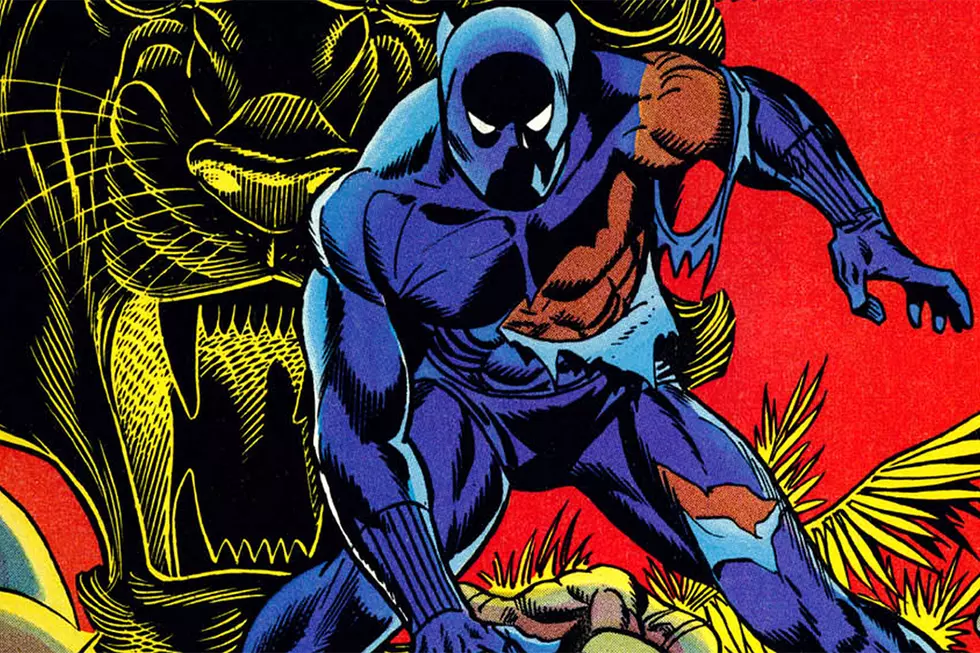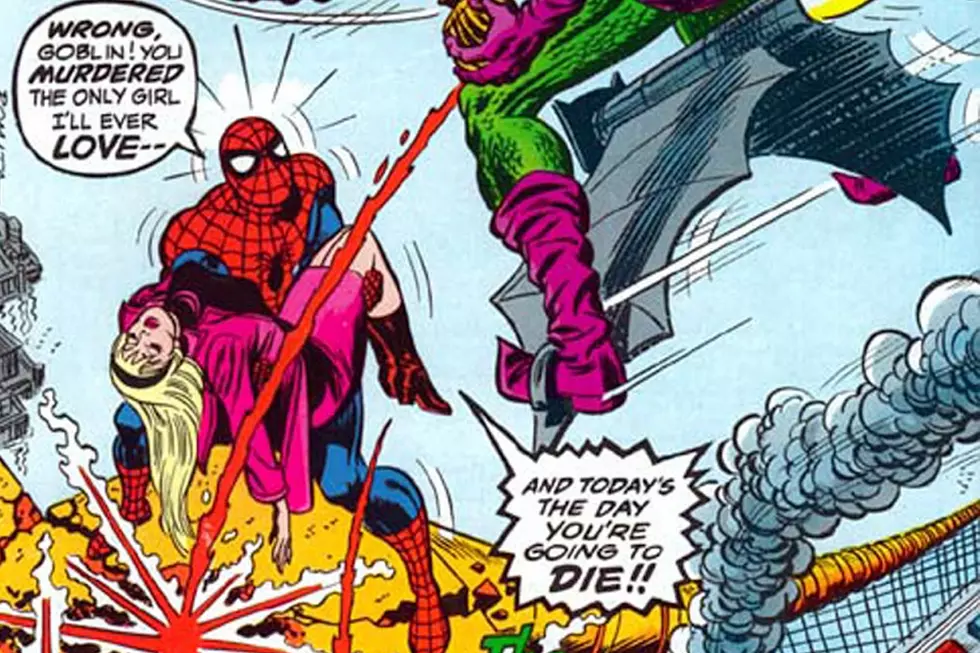
His Name Is… Kane: A Birthday Tribute to Gil Kane
Name a big-two superhero comic besides X-Men, and odds are Gil Kane worked on it.
And he didn't just work on superhero comics. He left his mark on them. After all, he drew one of the (if not the) most famous Spider-Man story of all time, "The Night Gwen Stacy Died." He co-created the Silver Age Green Lantern and Atom. He co-created Iron Fist. And that's just scratching the surface. Kane's bibliography runs as deep as any of his contemporaries. His birthday would have been this week.
Kane was born Eli Katz in Latvia on April 6, 1926. He didn't stay long--his family immigrated to New York when Kane was three. Soon enough he was working in comics. Kane told The Comics Journal that he was visiting comics offices by the time he was 15, where he'd run into artist Joe Kubert, who was also already working as a teenager:
My first job came the next year at 16. During my summer vacation, I went up and got a job working at MLJ in 1942 when Harry Shorten was the editor, and Scott Meredith nee Feldman was the associate editor. At that time Bob Montana had just started to create Archie for them because of the popularity of radio teenager Henry Aldrich. I started working in production and I worked there for three weeks but apparently they thought I was making too much noise and they fired me.
Even then, Kane had shifted from his birth name to his pen name.
He bounced back pretty quickly, picking up uncredited work for Atlas Comics and DC on war stories and Sandman mysteries. He even served as a ghost artist for Jack Kirby. Soon after, Kane was drafted to serve 19 months in the Army in the Pacific theater during World War II. Afterward, he almost immediately went back to work for DC on Sandman and Wildcat stories. By the end of the 1940s, he was working on Westerns and Rex the Wonder Dog comics for the company.
A decade later, DC would call on Kane to help design its new Silver Age superheroes. In the book DC Comics: Sixty Years of the World's Favorite Comic Book Heroes, Historian Les Daniels said Kane played a big role in defining the look of superheroes during the era: "The design was part of an approach that emphasized grace as well as strength, an approach especially notable in Kane's flying scenes... Green Lantern appeared to soar effortlessly across the cosmos."
Over the next few years, Kane would work on numerous other DC characters, all but redefining them for the era: Hawk and Dove, Plastic Man, the Teen Titans. He wasn't limited just to DC; he drew T.H.U.N.D.E.R. Agents for Tower Comics and Hulk stories in Marvel's Tales to Astonish. In 1968, Kane self-published a graphic novel (with some scripting help from Archie Goodwin) titled His Name Is... Savage, a sci-fi spy story that pushed boundaries for violence in comics at the time and was clearly influenced by thy spy cinema of the time.
By the 1970s, Kane was mostly working for Marvel, succeeding John Romita Sr. as the full-time penciler on Amazing Spider-Man. In addition to drawing the deaths of Gwen Stacy and the Green Goblin, Kane also pushed the envelope in a story written by Stan Lee, drawing an anti-drug story in issues #96-98. The issues dealt with the increasingly troubling pill addiction of Harry Osborn, and saw Spider-Man getting into scuffles with Harry's dealers. The Comics Code strictly forbade any mention of drugs, even negative, so Marvel published the issues without the Comics Code seal. After the issues were met with widespread approval, the Code was changed.
You can also credit Kane and writer Gerry Conway with the end of the universal use of the "Marvel method" at the publisher. In a 2009 interview with Back Issue, Conway said Kane greatly preferred tight scripts, so Conway started offering them to him. "I'm generally happier with the later stories we did together than the first few," he said.
Kane returned to DC in the 1980s, working on Justice League of America and Action Comics among other series. In the 1990s, he worked for multiple publishers yet again, drawing portions of Superman: The Wedding Album, a Jurassic Park adaptation for Topps Comics, a three-part Batman: Legends of the Dark Knight story, a miniseries focusing on the superhero Edge at Malibu Comics, the Life Story of the Flash graphic novel and several Judgment Day one-shots for Awesome Comics.
And that's just his comics work. Kane also did book illustrations; set designs for plays; character designs for DC, Ruby-Spears and Hanna-Barbera cartoons, and lost more. He had accomplished a whole lot by the time he died of lymphoma on January 31, 2000.
His influence will be felt for a long time. Howard Chaykin called him "the most influential male" in his life. Odds are a lot of artists have felt the same way.
More From ComicsAlliance









